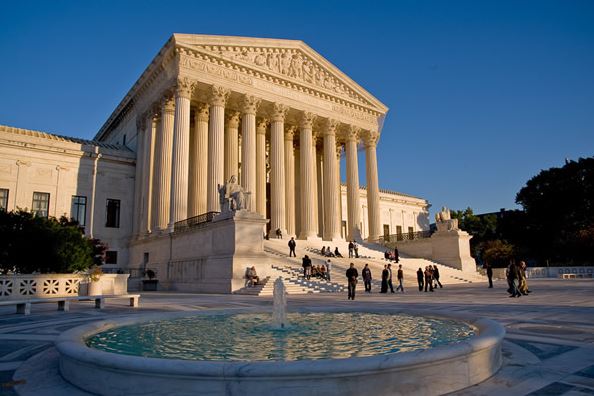
In her role as dean of the University of Bridgeport”™s College of Naturopathic Medicine, Marcia Prenguber has witnessed a growing trend. Although her school is the only East Coast institution to offer a degree in that medical field and many of her students are from Connecticut, fewer graduates are staying within the state after receiving their degrees.
“We see that less and less,” said Prenguber. “We did a survey of a fourth-year class and found they were far less interested in staying ”” they want to go out and use the training they”™ve received here and they can”™t do that now (in Connecticut). They”™re being boxed in a bit. They can go to another state ”” Vermont, Maine, New Hampshire ”” for prescriptive authority. They are looking at what is going to suit them better ”” using their training, being able to make a living at it and being able to interact with other providers on a more even-field level.”
That”™s not to say there is no future in being a naturopath here. Connecticut is one of 19 states with licensing or registration laws for naturopaths, and the District of Columbia, Puerto Rico and the U.S. Virgin Islands also welcome the medical practice, defined by the American Association of Naturopathic Physicians as “a distinct primary health care profession, emphasizing prevention, treatment and optimal health through the use of therapeutic methods and substances that encourage individuals”™ inherent self-healing process.”
Each state and territory sets its own parameters regarding the naturopath”™s scope of practice and restrictions vary widely. In Connecticut, efforts to expand state law to allow naturopaths to write pharmaceutical prescriptions have been stymied.
The Connecticut State Medical Society has been a vociferous opponent of the prescriptive licensing effort and the naturopathy practice as a whole. In a March 2016 letter to the Public Health Committee, the organization declared, “If naturopathic principles are sound and effective, it should not be necessary for the naturopaths to seek to transform themselves into something they are not by simply seeking legislation to expand into a practice of medicine without proper training.”
“We”™re back with the legislature now ”” again ”” and we”™re hoping that this year will be the magic year,” Prenguber said. “It”™s our fourth year approaching it. We”™ve met several times with the Public Health Committee, we”™ve met with our legislators ”” the Bridgeport contingent is very much in favor of us moving forward because it would enable us to meet patients”™ needs in a much greater way.”
Elsewhere in the country, naturopaths are often able to provide a greater depth of medical care. Darin J. Ingels, a naturopathic practitioner with offices in Fairfield and in Orange County, California, noted that naturopaths in California can incorporate intravenous therapy and injectable therapy into their practices. “Some states, like Arizona and Washington but not California, allow minor surgery,” he added.
Yet Ingels finds himself wearing two different identity tags between his coastal practices. “In Connecticut, we”™re licensed as primary care physicians,” he said. “In California, we are doctors, not physicians.”
In some corners, naturopaths are viewed with suspicion or worse. The mere mention of the Wikipedia website, which identifies naturopathy as a “pseudoscience,” sparked a loud and long laugh from Prenguber, who said such comments say less about her practice and more about its critics.
“My experience is that people who do that are typically not well educated about the training that goes on,” she said. “They are often astounded at the training that we have, because it is comparable (with medical doctors). The first two years involves basic sciences, which is followed by clinical studies. Our philosophy is part of that clinical application ”” trying to help the body heal itself, rather than putting up a wall and stopping whatever is happening.”
Tearing down federal walls that prevent naturopaths from serving specific demographics has been an ongoing challenge for naturopaths. Prenguber noted that the U.S. Department of Veterans Affairs will not cover naturopathic treatments for retired military personnel. The University of Bridgeport has run programs that offer veterans a free first-time free visit with a naturopathic practitioner.
Stephanie DeSousa, a Ridgefield naturopath, noted that seniors seeking this channel of medical care also have to pay out of pocket. “Naturopathic doctors cannot take Medicare,” she said. “It”™s just a federal law.”
Private health insurance companies have varying policies with respect to naturopathic coverage. ConnectiCare, for example, does not accept naturopathic treatment. According to practitioners, other insurance companies like Cigna, Anthem and Aetna do cover naturopathic medicine but on a case-by-case basis, depending on the practitioner.
DeSousa operates her practice on a cash-only basis while waiting for acceptance of her application to several carriers for inclusion in their providers network.
Despite the potential financial and legal obstacles to obtaining naturopathic treatment, the general public seems not to be rejecting naturopathy.
“A lot of people have been through the system and it didn”™t work for them,” said DeSousa, referring to conventional medicine. “They want to look for a natural approach to heal.”
For Ingels, families with young children make up a sizable percentage of his patients. “My practice is 75 percent children,” he said, adding that positive pediatric treatments inevitably bring in the siblings and then the parents of his youngest patients.
Bringing in a new wave of younger patients could also be achieved via social media, said Mary Ford, who is completing her degree in naturopathic medicine at the University of Bridgeport. “If you look at Instagram or Facebook, people want a more natural approach to health,” she said. “I think if we establish ourselves there, we can let people know we are here.”




















